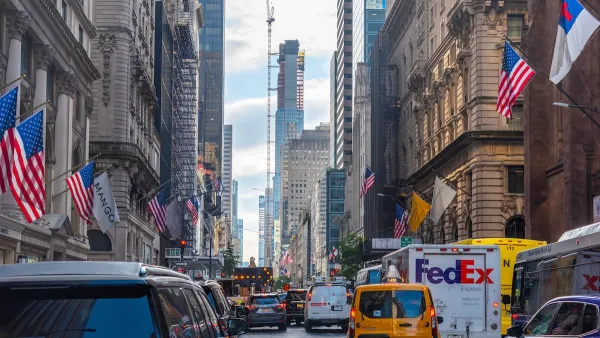A study from MIT's Department of Mathematics provides new means of understanding how traffic jams form.
The mathematicians discovered that "jamitons" (their name for the equations that describe traffic jams) are strikingly similar to the equations that are used to describe detonation waves produced by explosions.
"The equations, similar to those used to describe fluid mechanics, model traffic jams as a self-sustaining wave. Variables such as traffic speed and traffic density are used to calculate the conditions under which a jamiton will form and how fast it will spread.
Once such a jam is formed, it's almost impossible to break up -- drivers just have to wait it out, says Morris Flynn, lead author of the paper."
FULL STORY: Mathematicians Take Aim At 'Phantom' Traffic Jams: New Model Could Help Design Better Roads

Maui's Vacation Rental Debate Turns Ugly
Verbal attacks, misinformation campaigns and fistfights plague a high-stakes debate to convert thousands of vacation rentals into long-term housing.

Planetizen Federal Action Tracker
A weekly monitor of how Trump’s orders and actions are impacting planners and planning in America.

In Urban Planning, AI Prompting Could be the New Design Thinking
Creativity has long been key to great urban design. What if we see AI as our new creative partner?

King County Supportive Housing Program Offers Hope for Unhoused Residents
The county is taking a ‘Housing First’ approach that prioritizes getting people into housing, then offering wraparound supportive services.

Researchers Use AI to Get Clearer Picture of US Housing
Analysts are using artificial intelligence to supercharge their research by allowing them to comb through data faster. Though these AI tools can be error prone, they save time and housing researchers are optimistic about the future.

Making Shared Micromobility More Inclusive
Cities and shared mobility system operators can do more to include people with disabilities in planning and operations, per a new report.
Urban Design for Planners 1: Software Tools
This six-course series explores essential urban design concepts using open source software and equips planners with the tools they need to participate fully in the urban design process.
Planning for Universal Design
Learn the tools for implementing Universal Design in planning regulations.
planning NEXT
Appalachian Highlands Housing Partners
Mpact (founded as Rail~Volution)
City of Camden Redevelopment Agency
City of Astoria
City of Portland
City of Laramie





























